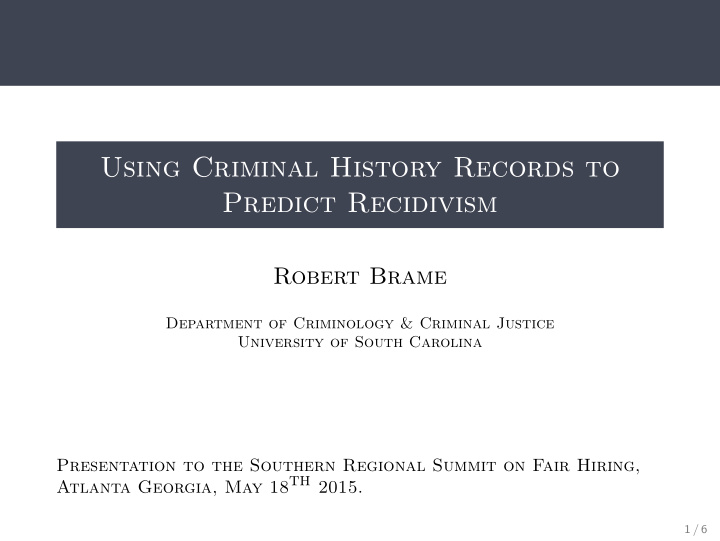



Using Criminal History Records to Predict Recidivism Robert Brame Department of Criminology & Criminal Justice University of South Carolina Presentation to the Southern Regional Summit on Fair Hiring, Atlanta Georgia, May 18th 2015. 1 / 6
Cumulative Arrest Prevalence: Demographic Projections Source: Ronald Christensen (1967). Projected percentage of U.S. population with criminal arrest and conviction records. In Task Force Report: Science and Technology , pp. 216-228. Institute for Defense Analysis, Ed. Washington, DC: U.S. Government Printing Office. 2 / 6
Christensen (1967:218; Figure J-2) Source: Ronald Christensen (1967). Projected percentage of U.S. population with criminal arrest and conviction records. In Task Force Report: Science and Technology , pp. 216-228. Institute for Defense Analysis, Ed. Washington, DC: U.S. Government Printing Office. 3 / 6
Philadelphia Hazard Rates Source: Megan Kurlychek, Robert Brame, and Shawn D. Bushway (2007). Scarlet letters and recidivism: Does an old criminal record predict future recidivism? Criminology & Public Policy , 5:483-504. 4 / 6
NY Hazard Rates Benchmarked w/General Population Source: Alfred Blumstein and Kiminori Nakamura (2009). Redemption in the presence of widespread criminal background checks. Criminology , 47:327-359. 5 / 6
Racine Hazard Rates Source: Megan Kurlychek, Robert Brame, and Shawn D. Bushway (2007). Enduring risk? Old criminal records and predictions of future criminal involvement. Crime & Delinquency , 53:64-83. 6 / 6
Recommend
More recommend